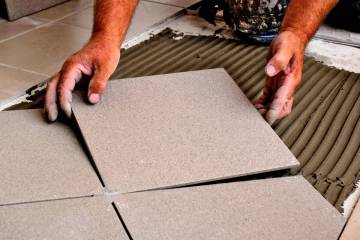Agave weevils damaging cactuses this time of year
I am getting quite a few emails about cactuses dying and particularly agaves. The culprit is the agave weevil that lays its eggs at the base of agave leaves. As their young hatch from the eggs, they burrow into the stem of the agave and all through it, including the roots. The plant rots and dies from all the damage done usually in late April or May. We are seeing it now.
A pesticide applied around its base in March, and lightly watered in, usually prevents the damage from getting worse. The other option is not to grow agave.
If you’ve never grown any cactuses before, make sure the soil drains easily of water, and don’t water these plants too often. I have found a deep watering every three weeks is frequent enough to push new growth and get the plants larger.
Know where your cactus comes from. Some beautiful cactuses and other succulents come from the hot, dry deserts of Central America and North America. Make sure they are placed in full sun. Other cactuses might come from milder, coastal or high-altitude desert climates and need protection from the intense Mojave Desert sun. Knowing where the cactuses come from empowers you and its landscape placement.
Q: I have a Mexican bird of paradise and Sun Trumpet Tecoma plant growing close together. Both have deformed dwarfed growth and damaged leaves. The bird of paradise feels sticky as well. I tried sprays for insects, including neem oil, and cut the plants down completely to have them grow back with the same issue. Other plants in the yard are doing fine. Any help is appreciated.
A: I don’t think these plants are facing a disease or insect problem. It is hard to say without guessing, but from your description, it sounds like a soil contamination issue.
Plant an ornamental grass and broadleaf plant in that area and see if you get the same response. If it were a cooler time of the year, I would tell you to germinate a seed mix with grasses and wildflowers in it.
There might be a weed killer applied to this area and responsible for this problem. Some weed killers like dicamba, if applied at a heavy dose or used as a brush killer, can damage broadleaf plants like your bird of paradise and Tecoma and not hurt grasses.
The high rate of this type of herbicide is why some weed killers are labeled as a “brush killer.” There are other weed killers sold as “soil sterilant” that can persist for years and kill most plants grown in that soil.
Some weed killers are difficult to remove by leaching with water. If the ornamental grass isn’t damaged but the broadleaf plants are, then either replace the soil in that area to a depth of about 12 inches deep or only grow ornamental grasses in that spot.
Q: I am growing hot peppers in big plastic pots with soil for vegetables I bought from a local nursery. The plants grow fine, but the blossoms dry out and fall off without setting any peppers. They get plenty of water, not too much, and the bottom of the pots are drilled out for drainage.
A: Growing plants in pots is difficult in the hot desert. The major problem is overheating of the soil. The side of the container facing the sun can reach 170 degrees and kill half of the roots inside.
Losing half of the roots of a plant can be quite stressful and cause flower drop. You can kill a lot of roots with a bad soil mix, poor drainage and watering too often, but it doesn’t sound like that is what’s happening.
Make sure the container is large enough. Five-gallon nursery containers are large enough if plants are watered daily, sometimes twice a day when it’s hot and the soil stays cool.
I have had luck with this size of container growing vegetables and herbs on the east side of a building so the container is shaded in the afternoons. Containers might be shaded by other containers or a vegetable bed. But 15-gallon containers work better.
Water just before the container gets hot. Moist soil is harder to heat up than drier soil. That is because the water in the soil absorbs heat. I will usually water between 7 and 9 a.m.
Double pot the container. Putting the growing container inside an outer, more decorative container shades the inside container and protects plant roots.
This is called “double potting” or “pot-in-pot” container growing. If the containers are the same size and shape, put a layer of pea gravel 2 inches deep in the bottom of the outside container so they don’t lodge.
Plants grown in the double containers for more than one growing season should be twisted a half-turn every month to break off roots growing through the container into the ground.
Q: I have an ocotillo plant that is now sprouting beautiful flowers and leaves. I have been watering it with a mist spray near the top. Now that it is in full foliage, can I turn off the mist and just water at the base once a week?
A: I have never been a big fan of misting plants like saguaro, Joshua tree or ocotillo. It doesn’t hurt anything, but personally I think it’s a waste of time.
The effects of misting last less than 10 minutes in the desert. Ocotillo stem cuttings will grow roots in soil that drains without any misting if they are watered regularly in the spring.
Now that the leaves are out, turn over the watering to the roots. If it is newly planted, moisten the soil each time you water close to the trunk or stem.
A basin or doughnut constructed around the trunk helps contain the water. Fill the level basin with 1 to 2 inches of water each time you water.
Remember, these are desert plants, so don’t water them as often as nondesert plants. If you do, you can kill them.
In about one month, increase the size of the basin or apply the water over a larger area to encourage the roots to grow farther distances from the trunk. Watch the growth of your plant. Adjust your watering intervals to encourage or discourage growth.
Q: I received a thornless blackberry plant as a gift from an online nursery. Can I grow this blackberry bush in our yard? We have lots of rabbits and birds visiting all the time.
A: I have grown blackberries in the Las Vegas Valley. Some varieties of blackberries perform better in the eastern Mojave Desert than others. Some varieties struggle with poor growth and scorched leaves in our climate and soils, while others don’t have the same issues.
You don’t mention which variety you have, but I had success with Womack and Rosborough varieties out of the Texas A&M breeding program but not the Brazos variety, which came out of the same program and was successful in Florida. I have had poor luck growing any varieties coming from the Arkansas breeding program.
Don’t expect the same quality berries as you might get from the Pacific Northwest, and they don’t keep as long in our desert heat of May. Blackberries will be ready to pick in one day rather than two or three days as they are in cooler climates. That means you must check blackberries every day when they are close to mature.
I would grow blackberries as a novelty but don’t expect miracles. Amend the soil with good compost at planting time and water regularly. The Cooperative Extension at Arizona State University prepared an online fact sheet on blackberries from some research done in Yuma.
Q: I want to give my son a housewarming gift of a butterfly bush for his new home in Summerlin. Would there be any special care for growing that bush here?
A: I think you are referring to the butterfly bush, Buddleia davidii. This plant is grown successfully farther north, commonly in the Northeast, mid-Atlantic, and Midwestern states. It is meant to be grown in cooler, wetter climates and not intended for the desert.
Will it grow here? Probably, if you plant it in the cool microclimate part of the landscape and give it some TLC.
There is another Buddleia, Buddleia marrubifolia or wooly butterfly bush, that does do well here and is attractive to butterflies but might be hard to find.
In the desert, there are better choices for attracting butterflies, if that is your intention, including jojoba, any of the native senna, bottlebrush, saltbush, lantana, wolfberry, red bird of paradise and many others.
Bob Morris is a horticulture expert and professor emeritus of the University of Nevada, Las Vegas. Visit his blog at xtremehorticulture.blogspot.com. Send questions to Extremehort@aol.com.





























